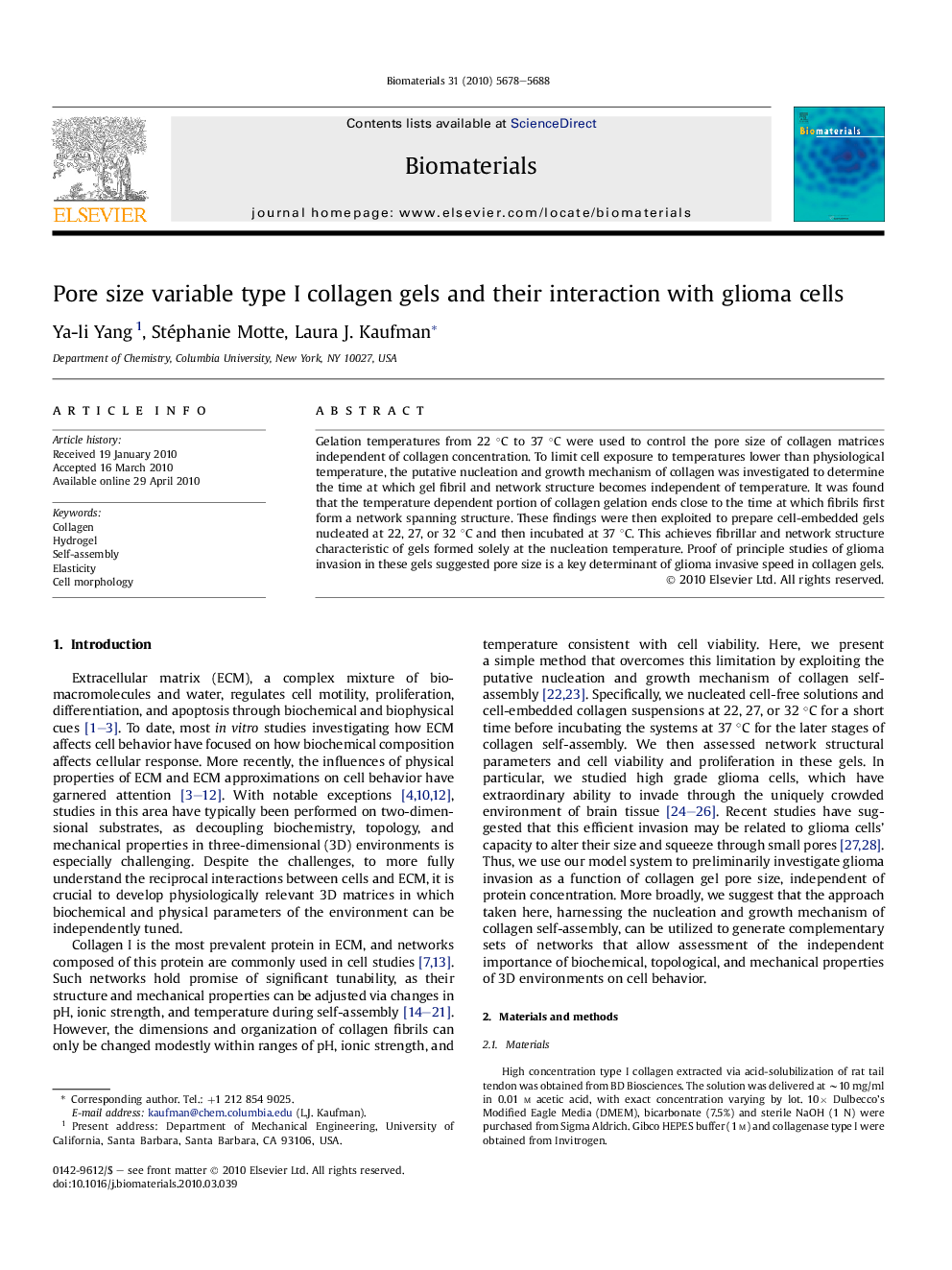| Article ID | Journal | Published Year | Pages | File Type |
|---|---|---|---|---|
| 9514 | Biomaterials | 2010 | 11 Pages |
Gelation temperatures from 22 °C to 37 °C were used to control the pore size of collagen matrices independent of collagen concentration. To limit cell exposure to temperatures lower than physiological temperature, the putative nucleation and growth mechanism of collagen was investigated to determine the time at which gel fibril and network structure becomes independent of temperature. It was found that the temperature dependent portion of collagen gelation ends close to the time at which fibrils first form a network spanning structure. These findings were then exploited to prepare cell-embedded gels nucleated at 22, 27, or 32 °C and then incubated at 37 °C. This achieves fibrillar and network structure characteristic of gels formed solely at the nucleation temperature. Proof of principle studies of glioma invasion in these gels suggested pore size is a key determinant of glioma invasive speed in collagen gels.
